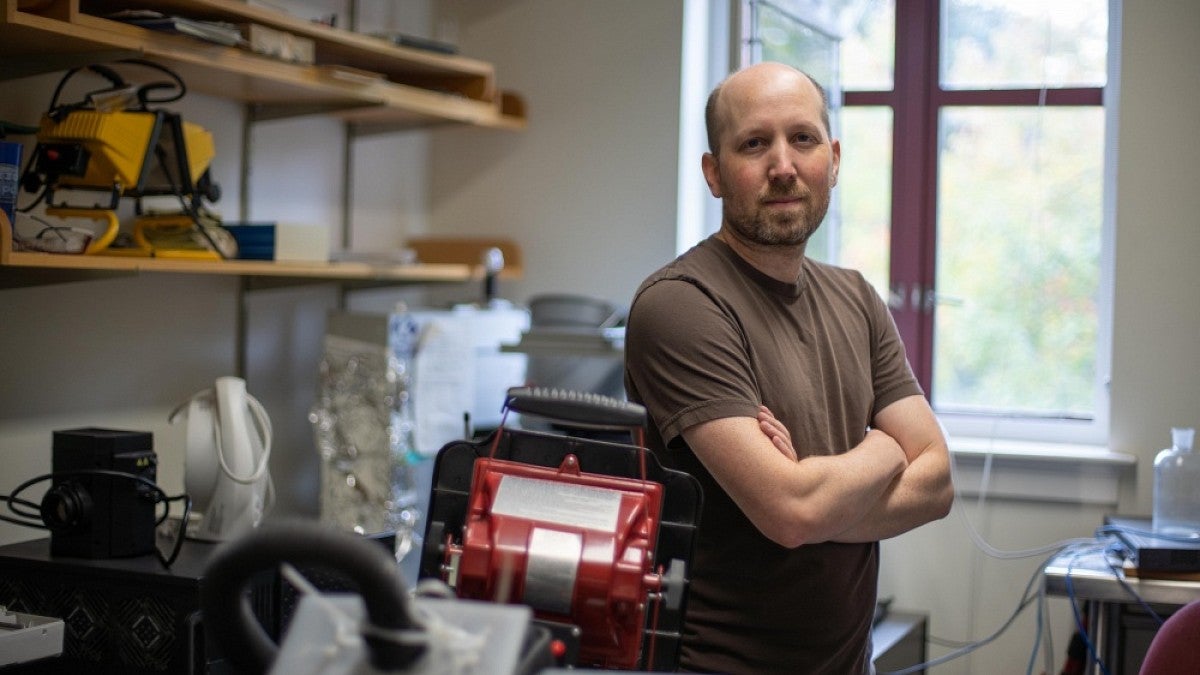When Italian physicist Giorgio Parisi was one of three scientists named last week to receive this year’s Nobel Prize in Physics, UO physicist Eric Corwin was elated to see his longtime collaborator recognized.
Among the scientific studies cited in Parisi’s Nobel award are three papers that Corwin co-authored, including two with Parisi and one with Andrew Hammond, a former student of Corwin’s at the UO.
“It felt really good to know that the work I’ve done has contributed to something so significant,” Corwin said. “It’s wonderful to be a part of that scientific effort.”
Parisi was one of three physicists awarded this year’s Nobel Prize for physics for “ground-breaking contributions to our understanding of complex systems,” according to the Royal Swedish Academy of Sciences. Such systems are characterized by “randomness and disorder and are difficult to understand,” the academy said. This year’s prize recognizes new methods for describing those systems and predicting their long-term behavior.
The other scientists, Syukuro Manabe of Princeton University and Klaus Hasselmann of the Max Planck Institute of Meteorology in Germany, were cited for their work physically modeling Earth’s climate and “reliably predicting global warming,” the academy said.
Parisi, 73, was awarded the other half of the Nobel for “the discovery of the interplay of disorder and fluctuations in physical systems from atomic to planetary scales.”
“I was so happy,” Corwin said. “Giorgio is of course a superlative scientist but he is also a remarkable person. He’s among a small handful of the kindest and most complimentary people in science I know.
“He’s a towering figure in our field. Yet, in working with him, he works as if he were a brand-new postdoc. He does calculations. He writes code. He gets his hands dirty. He’s fully committed to the effort. Working with him is an absolute joy.”
Corwin came to the UO in 2010, and soon after joined an existing collaboration that included Parisi, a physicist at Sapienza University of Rome, as well as Patrick Charbonneau of Duke University and Francesco Zamponi of ENS Paris. They both had been working in a broad sense on a problem known as the glass transition, the process whereby heat transforms glass from a hard material into something soft and malleable.
“We realized we were attacking the same problem from different sides and decided to work together,” said Corwin, an associate professor in the Materials Science Institute and the Department of Physics at the UO.
Both scientists are now part of a 13-member group of researchers called the Collaboration on Cracking the Glass Problem, which is funded by the Simons Foundation, a private group that funds large-scale scientific collaborations. Corwin said he saw the foundation’s call for proposals and suggested to Parisi and others that they apply for funding.
“This Nobel Prize is a validation of our collaboration’s efforts,” Corwin said. “It’s really gratifying to see this question that has been driving so many of us recognized on this broader scale.”
Corwin’s first graduate student, Peter Kirkpatrick Morse, said Corwin and Hammond conducted the first experiment to validate one of Parisi’s theories for which he was awarded the Nobel Prize.
Parisi’s prize recognizes not only the Italian physicist, but also “the community that helped him to build and maintain his scientific legacy,” Morse said in an email. “For the last decade, Eric Corwin has been instrumental in shaping that legacy.”
Before coming to the UO in 2010, Corwin earned his bachelor’s degree in physics at Harvard, his doctorate at the University of Chicago and did postdoctoral work at New York University Center for Soft Matter Research.
—By Tim Christie, University Communications


